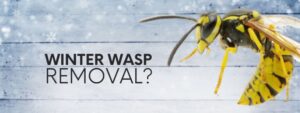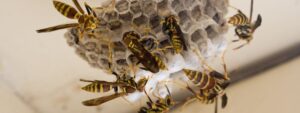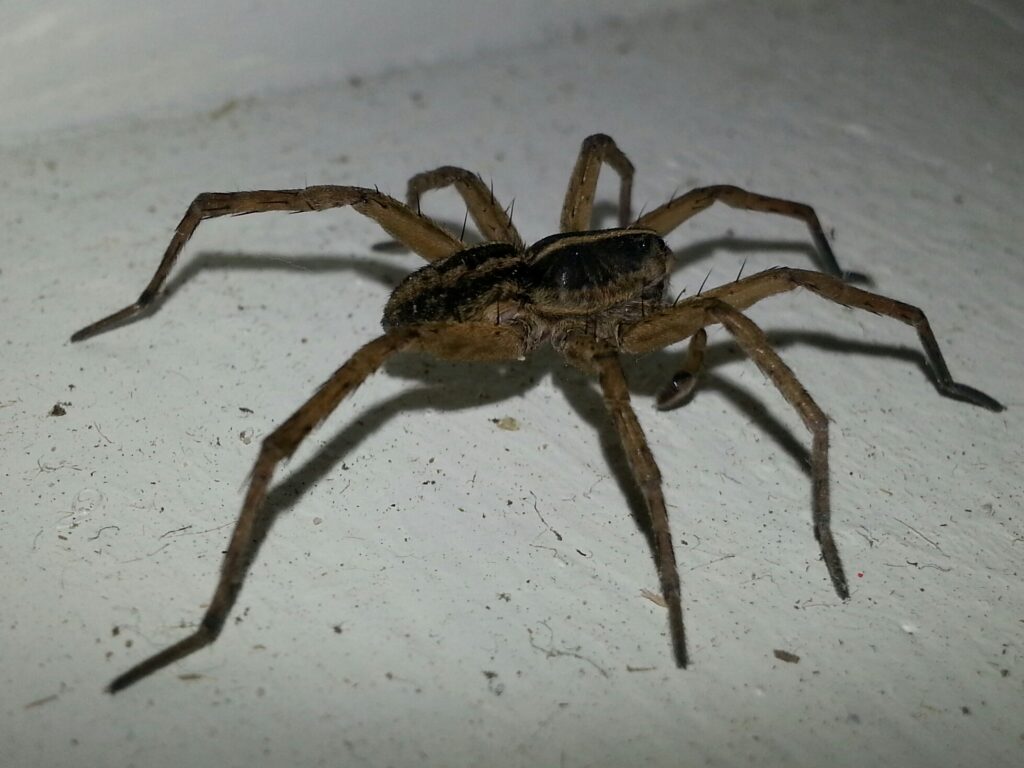 As winter casts its chilly blanket over the landscape, many people tend to believe that wasps, like other insects, retreat into hiding, leaving us to enjoy a season free from their buzzing presence.
This common perception can lead us to underestimate the ongoing activities of these pests even in the colder months. However, this misconception may put you at risk, as many wasps don't simply disappear; they might be nesting in hidden areas or emerge on warmer days, posing potential threats.
Understanding the true behaviour of wasps in winter is crucial, especially when considering whether to seek professional wasp removal services. Contrary to popular belief, some wasp species remain active, and their nests can become problematic as they can still defend their territory if disturbed.
So, to answer the question, “Do you need wasp removal in the winter?” YES!
Truly Nolen offers expertise in dealing with winter wasp issues, ensuring homes are safeguarded from unexpected encounters. This article will explore the reality of wasp activity during winter, the importance of timely removal services, and how to protect your space from these resilient insects.
As winter casts its chilly blanket over the landscape, many people tend to believe that wasps, like other insects, retreat into hiding, leaving us to enjoy a season free from their buzzing presence.
This common perception can lead us to underestimate the ongoing activities of these pests even in the colder months. However, this misconception may put you at risk, as many wasps don't simply disappear; they might be nesting in hidden areas or emerge on warmer days, posing potential threats.
Understanding the true behaviour of wasps in winter is crucial, especially when considering whether to seek professional wasp removal services. Contrary to popular belief, some wasp species remain active, and their nests can become problematic as they can still defend their territory if disturbed.
So, to answer the question, “Do you need wasp removal in the winter?” YES!
Truly Nolen offers expertise in dealing with winter wasp issues, ensuring homes are safeguarded from unexpected encounters. This article will explore the reality of wasp activity during winter, the importance of timely removal services, and how to protect your space from these resilient insects.
Wasp Life Cycle and Winter Behaviour
Wasps have a fascinating life cycle that changes with the seasons. During the warmer months, their colonies thrive with busy workers and a single queen. But as temperatures drop, a transformation begins. Worker wasps die off when food becomes scarce, leaving the queen to fend for herself. The queen's mission is simple - survival. She searches for a snug spot to hibernate and wait out the winter chill. Often, she finds solace in sheltered parts of homes, like attics or wall voids. These secluded spots offer just enough warmth to keep her dormant until spring reawakens her. Queens are incredibly resilient during this period. They lower their metabolic rate to conserve energy, and although asleep, they remain alert to changes in temperature. This means if a sudden warm spell hits, they might wake up sooner than expected, which is when homeowners may notice unusual wasp activity.Risks of Overwintering Wasps
The presence of wasps in our homes during winter can pose a series of potential risks that should not be overlooked. Although they may appear dormant, the reality is that these insects can awaken during unseasonably warm days, which can lead to various problems for homeowners.- Increased Indoor Activity: If queens wake up early, they may begin to search for food and nesting sites, resulting in increased activity within your home. This can lead to alarming encounters, particularly for those who may be allergic to their stings.
- Nesting Issues: A queen that successfully finds her way into your home can initiate a new colony by starting to lay eggs. Nest establishment can occur in hidden areas, making detection difficult until a significant population builds, at which point removal becomes more complicated.
- Aggressive Behaviour: Wasps are territorial, and if disturbed, they may react aggressively regardless of the time of year. If they feel threatened, they can sting defensively, which raises safety concerns, especially for children and pets in the household.
- Damage to Property: Their nesting habits can cause structural damage over time. Chewing through insulation or wood in the pursuit of building a nest can lead to costly repairs.
Signs of Wasp Activity in Winter
 As we navigate the colder months, it’s essential to be aware of the signs that indicate the presence of hibernating queens or nests on our property. Early detection can prevent future challenges, allowing us to enjoy a wasp-free environment. Here are some telltale signs to keep an eye out for:
As we navigate the colder months, it’s essential to be aware of the signs that indicate the presence of hibernating queens or nests on our property. Early detection can prevent future challenges, allowing us to enjoy a wasp-free environment. Here are some telltale signs to keep an eye out for:
- Small Holes or Cracks: Inspect the exterior of your home for tiny holes or cracks, particularly around eaves, attics, and walls. These openings could provide an entry point for queens seeking a warm, sheltered space to hibernate. Don't underestimate their ability to squeeze through tight spots!
- Visible Wasps on Warm Days: During odd warm spells, you might spot a few wasps buzzing around, seemingly confused by the sudden change in temperature. If you see activity outside your home on these unseasonably warm days, it's a possible indication that a queen has stirred from her slumber in search of food or nesting sites.
- Nesting Materials: Keep an eye out for any nesting materials, such as chewed wood or paper-like substances, accumulating in crevices around your property. This is a classic sign of wasps establishing a nest, and it’s best addressed early.

